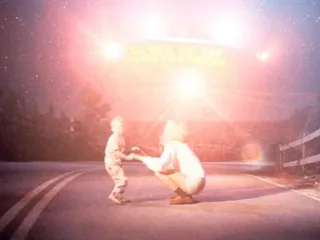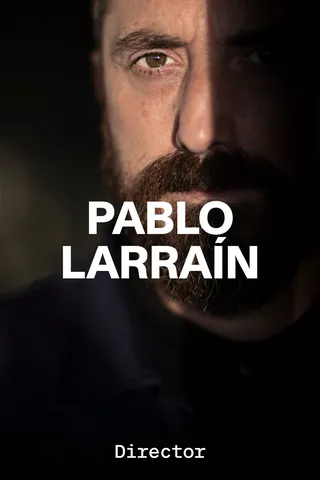Sebastián Lelio
After growing up in Chile under Augusto Pinochet’s deeply conservative, oppressively Catholic dictatorship, Santiago-based Sebastián Lelio has spent his filmmaking career creating female-driven liberation stories that deconstruct patriarchal power, religious faith and heteronormativity. Among the director’s standouts are Gloria (2013) and its English-language remake, Gloria Bell (2018), starring Julianne Moore; the Academy Award–winning A Fantastic Woman (2017), with a riveting performance by transgender actor Daniela Vega; and the Florence Pugh–led The Wonder (2022). As a cineast, Lelio has wide-ranging cosmopolitan tastes: His eclectic list of favorites for Galerie includes Werner Herzog’s gothic fairy tale Heart of Glass (1976); Bong Joon Ho’s maternal-rage thriller, Mother (2009); and Lynne Ramsay’s slow-motion family tragedy, We Need to Talk About Kevin (2011). He also curates recent Chilean standouts The Club (2015), Pablo Larraín’s parable about sexually abusive Catholic priests, and Socialist Realism (2023), Valeria Sarmiento’s salvaging of her late husband Raúl Ruiz’s long-shelved political satire.
my FILM LIST
Click each title to discover our curator’s notes and where to watch
For me, Buster Keaton is a filmmaker who will always belong to the future. He represents pure cinema, in the sense that his poetics are based on the capture, control and inhabitation of movement. His humor is rooted in the interaction between humans and movement, and Steamboat Bill, Jr. is a masterpiece of what Keaton knew how to do so well: the gag. The presence of that impassive face, barely surprised when confronted with a turbulent world full of dangers and traps, is one of the most famous combinations of expressive gestures in the history of cinema—Buster Keaton’s stoic face (almost like a Kuleshov effect) juxtaposed with his mismatches with the world, especially with the physical world.
There is a sequence that always steals my heart, the hurricane scene, which we humbly tried to honor in A Fantastic Woman (in the scene where Marina walks against the wind): Keaton faces a world ravaged by the wind, and everything in the shots is in motion—roofs, trees, cars. Everything moves as if dancing, as if it were made of air. His cinema at that moment is capable of touching that which is so precious and which might be pure art, grace and lightness. In that wind sequence, Keaton makes us smile and open our eyes in surprise and inhale through our mouths an enchanted Oh! To be able to elicit that from the viewer is, for me, the territory of great art.{{ All Items }}- Despite the aura of evasion and lack of political commitment of Busby Berkeley, there is something in his pursuit of aesthetic perfection and the hyper-design of his approach to cinematic choreography that is fascinating and, in a way, also pure cinema. Perhaps the musical genre is one that invites cinema to deeply be itself, to meet with its essence, which is movement captured in space and time. The pleasure of form—of geometry, of seeing the world and bodies moving in a coordinated rhythm—makes us feel for a minute that the entire universe has an order. Many of the shots from 42nd Street are mythic and have been revisited, which is completely understandable. Humbly, in A Fantastic Woman, when Marina dances in the nightclub and flies toward the camera, that’s completely taken from Berkeley’s choreography in this movie—it’s our Latin-American way of thanking him. There’s a modernity here that somehow cinema enslaved to narrative struggles to reach. To achieve the level of pure form, even detached from meaning, is tremendously attractive. It requires a level of knowledge and technical skill only attributable to a human being who has conquered the craft. In Berkeley’s sequences there is an ambition for perfection, and as a viewer, one feels tremendous joy observing this ambition embodied in a completely perfect and successful manner. Berkeley makes us part of that victory, makes us feel that perhaps we can have our own victories if we commit and dedicate ourselves completely to whatever task we are immersed in. Even though thematically there is something outdated in Berkeley, there is also a freedom and an abstraction that will make him eternally avant-garde and eternally young.
{{ All Items }} Fahrenheit 451 is the only English-language film by the celebrationist François Truffaut, one of my favorite directors. Every frame exudes the beauty and joy of filming. Fahrenheit 451 is also a great homage from a disciple to his master—from Truffaut to Alfred Hitchcock. One can see Hitchcock’s characteristic gestures through the vitalist sieve of Truffaut. There’s the formal narrative rigor and the approach to cinema as if it were music, which was so characteristic of Hitchcock and which Truffaut naturally inherited, not only because of Bernard Herrmann’s score (which gives the film intensity and distress that at times remind us of Psycho and Vertigo), but also because of the framing and editing for the precise distance with which he films his characters (especially women), and for the notion of being an ordinary man in the wrong place.
It is a film with a very particular lyricism—a chant to individual freedom and to the independence of thought and an ode to that immense evolutionary device that books are. The sequences in which the books and their pages burn, turned by the winds of the fire, are among the most beautiful objectual sequences I have ever seen.
In Fahrenheit, everything is homage, from the allusions to Hitchcock to the titles we see burning (Jean Genet and Gustave Flaubert, among others). It is very interesting to see a director working comfortably in his expressive territory and at the same time completely out of his comfort zone—filming in English, making a film that technically is sci-fi. When a director of Truffaut’s talent gets into a problem like that, sparks of beauty arise. It is interesting that Truffaut, who was always someone who adapted books, chose Ray Bradbury and Fahrenheit 451 as the book to adapt into English. A book that, like the movie and like Truffaut, is imbued with the horror of the world and yet exudes an optimism despite everything. That is the element of Truffaut's cinema that has always moved me the most.
{{ All Items }}What I love about 2001 is that it manages to combine grand spectacle with an experimental vocation. It’s pop and at the same time could be perfectly considered as the most demanding cinema. As often happens with Kubrick—and this is something I greatly admire about him—he approaches genres and pushes them to their limits until they overflow. A horror film by Kubrick is terror redefined. A social satire like A Clockwork Orange also reinvents the genre. In 2001 that’s exactly what happens: Before this movie, science fiction lacked rigor. In his collaboration with Arthur C. Clarke, Kubrick imbued the universe they created with scientific rigor, constructing a world where the ships, suits, machines and communication seemed completely possible and coherent in ’68 and still seem absolutely plausible today. The film has something grandiose: Its narrative arc is possibly the longest ever filmed. From the dawn of humanity to the ending, which occurs in a space-time we no longer recognize as the present, the past or the future.
Needless to mention is its reflection on technology, when the human ancestor takes a femur and begins to hit the rest of a skeleton. In that sequence Kubrick also proposes an explanation about the birth of art, because that action could be considered as a meditation on the birth of all forms of artistic expression and also of technology, the human ability to extend its physical possibilities through the use of tools, and how that relates to the level of consciousness of the species. When that ancestor, in a sort of expressive epiphany, throws the femur into the sky, and the airborne femur cuts to a floating ship, which in turn seems like a femur made of technology, also bone-colored, our heads explode. Because it makes us understand that in that same creative, destructive, disruptive force—in the natural—lies the civilizing energy, for better or worse.
The movie anticipates the whole problem of artificial intelligence in the astronauts’ relationship with HAL 9000, a panoptic, cold, human-yet-not-human eye that plays with them, monitors them and controls them, so much so that it decides to kill them. Here also come the greatest poetic heights of the movie, when David Bowman begs HAL to open the bay doors, resorting to human deceit to re-enter the ship, and in a sequence filled with tension and coldness, he accesses the computer’s neural center, that marvelous sarcophagus of glowing red rectangles, and begins to gradually deactivate it. HAL begs him to stop, but Bowman continues to kill it in what may be one of the most beautiful murders in the history of cinema and also an act of human freedom over the tyranny of artificial intelligence.The monolith of 2001 is, for me, the most beautiful, intelligent and perfect vacuum device at the center of a narrative, because if one thinks about it in terms of framing, its middle is literally a black crack, completely opaque. And that—the unsaid—turns it into a perfect cinematic and poetic artifact. Toward the end, when Bowman prepares to die and stretches his hand toward the monolith as the camera enters into that darkness, Kubrick reaches a kind of discovery, a philosophical, cinematic and poetic epiphany for which I am deeply grateful.
{{ All Items }}Army of Shadows is an example of cinema in its purest form, a specialty of the French master who in many ways anticipated the idea of the auteur that became the battle flag of the Nouvelle Vague. It is no surprise that Melville is one of the heroes of that movement, because every gesture is charged with his identity and personal stamp. Melville steps aside, allowing the elements that constitute the narrative to sustain themselves in an almost pristine manner, achieving maximum expressive efficacy with the smallest amount of gesture. He knew to position himself just a centimeter beyond sentimentality, but also how not to fall into total coldness. He is the master of the tension generated by the distance of the point of view.
In Army of Shadows, everything is felt—all the characters seem to have their hearts in their throats, yet none of that is seen. That is one of the qualities of the best cinema. The film does not occur within what happens in the frame, but there and elsewhere at the same time, both off-screen and in the projection that the film triggers in the viewer. I love that Melville delves into genre, in this case a Resistance film, one of espionage, the behind-the-scenes of war. Just as in Le samouraï, he enters the detective genre and exposes it while at the same time deconstructing and disarming it. His cinema is so precise that it gives you the feeling of looking at a transparent clock: You can see both the time and the mechanisms that allow the clock hands to mark the time. In some way Melville conquers Theodor Adorno’s idea that “art is magic freed from the lie of being truth.” Precision cinema, surgical yet burning with passion. A great film about commitment and sacrifice. The secret connection between characters who give everything for the freedom of their homeland and Melville’s commitment to give everything for the freedom of his cinema is very moving.
{{ All Items }}It’s impressive that Tarkovsky was able to make Solaris and convince the Soviet cultural ministries to fund another one of his mystical and spiritual films. In a Soviet world marked by the absence of the idea of God, Tarkovsky emerges like an alien and brings back, perhaps from the Middle Ages or perhaps from the future, flashes of the deepest human spirit and the spirit of the planet. The movie is based on the book by Stanislaw Lem but is a completely personal adaptation, a blockbuster that manages to reach very deep philosophical ideas and abstraction. Watching it is like facing cinema in all its philosophical potential, but it also gives the viewer the experience of aesthetic glory, the epiphany of form.
The movie is filled with passages that are mythical in the history of cinema, like the famous final sequence where, after the protagonist embraces his father, it reveals that everything is an island interconnected with everything else. Or its famous initial sequence where the algae move, revealing their nature as intelligent beings. In Tarkovsky, and especially in Solaris, everything is charged with spirit: a cup of tea exposed under the rain, a restless horse, a semi-documentary scene of driving along the streets of Tokyo. And of course the beautiful resurrections of Khari, the deceased wife of Kris Kelvin, the psychologist-astronaut exposed to the Tarkovskian zone, where desires, fantasies and dreams—luminous and terrible—materialize in front of humans. In Solaris, just like in Stalker, thought creates. It creates aberrations filled with beauty, but it also creates monsters. The very idea that a ship can be suspended over an ocean speculated to be the brain of God is already too much for any mind, not to mention using—like no one else—the adagios of Bach, and aligning with all universal art. It’s exciting to see this in the sequence of the ship’s library, where an open book floats through the air and paintings by Pieter Brueghel the Elder hang on the wall, where works of human art are stored like a Noah’s ark, preserving our own consciousness.
Solaris is capable of filming consciousness, the limit of knowledge, the frontier at which we know everything we know and yet have ceased to know. This is the zone where Tarkovsky thrives.
{{ All Items }}- One of the most singular and unique films ever made by a Chilean-born director. Formally savage and raw, inhabiting areas of incorrectness and the forbidden that today would be completely impossible to film. Loaded with as much rage as inspiration, it is a kind of grand Mexican mural about the poetic foundations of Latin America—full of Fauvist strength. A crude portrait filled with the bones and guts of our identity and populated with unforgettable moments, sometimes punk and sometimes with complete precision. The film is capable of speaking about the divine while having its feet buried in the mud of the world. And it has one of the most unforgettable meta endings: The main character asks the camera to zoom back, and it goes back and back until it reaches reality—because reality awaits us.
{{ All Items }} As a child, one of the first times I was touched by the spell of cinema was when I saw Close Encounters of the Third Kind. I believe it was Spielberg’s ability to combine two emotions that together summarize the fundamental aspects of the human experience: the fear of the unknown and the wonder at the magnificence and beauty of the world. I adore Spielberg’s formal perfection and how in the ’70s he managed to make a film that already had the aura of a classic while being science fiction. Along with Andrei Tarkovsky and Stanley Kubrick, he is responsible for elevating science fiction to the realm of great cinema. There’s a symbiosis that is very much his, which is also a way to describe what it means to be a filmmaker: the combination of a computer engineer and a pianist. Or as Guillermo del Toro says, making films requires the resistance of a boxer and the fragility of a poet.
That iconic “D, E, C, C, G” became one of the most famous sound passages in the history of cinema, on par with the whistles in Fritz Lang’s M or the radiant vibration of György Ligeti’s score in 2001 when we see the monolith. Close Encounters is a film so loaded with iconic moments that watching it is one of those experiences that seeps into you and settles inside as a memory. The child opening the door and the light bathing the room, the beauty of the ships descending while playing that melody, François Truffaut playing the scientist, his hair swept by the wind—these are moments of such tremendous visual and sonic rapture. They embed themselves in the soul of the viewer and turn Close Encounters not only into a philosophical reflection of our place in the world, a sort of essay on what meeting other species would mean, but also turn the film itself into something like a loved one. The dimension of the film I love the most is that the encounter with others, with “the alien,” can also be seen as the struggle of an artist to use their mediums and resources to find cinema itself. What Spielberg finds in meeting the aliens is cinema, expressing itself with all the force of images and all the power of sound.
{{ All Items }}- My Neighbor Totoro is a planet in itself. Miyazaki achieves the most difficult balance between dread and tenderness by appealing to the child living within the viewer. It’s so universal that it can be watched by both tormented adults and children who just want to play, which speaks volumes about its vast spiritual scope. Miyazaki is someone capable of making everyone feel invited to the festival of colors, vibrant eyes, windswept dresses, and hair and grass that define his cinema, and in particular Totoro. When I was a child, I was a big fan of Heidi: A Girl of the Alps and 3000 Leagues in Search of Mother, and in Totoro there’s something of that aesthetic of characters who wander in a world full of spirits, in a world where matter is as alive as beings.
Miyazaki has a tone and a poetry that are unmistakable, and also the hallmark of an artist who is fully formed and capable of offering—of giving—the world a completely alive universe that carries within it a beating heart. For these reasons Miyazaki and Totoro hold a very special place in my heart as a cinephile.
{{ All Items }} - When I first saw Orlando, my mind was blown by the possibility of traversing time and by the dissolution of the traditional idea of character, which is an idea derived from literature and theater that the 21st century (because I consider Orlando a 21st-century movie) begins to dissolve. And in Orlando the capacity of She/He to become one and the other turns the device of the character into a living, polysemous artifact loaded with interpretative and poetic possibilities. There’s something in the freedom of that flow that is decades ahead of the conversations we are having today about the extent to which roles, identities and ways of inhabiting the body and the world are culture, and to what extent they can also be shaped by human freedom. The energy that Orlando unleashes (hats off to Virginia Woolf) is completely contemporary and loaded with future. The film is of exquisite aesthetic beauty and of course has at its center Tilda Swinton, that extraordinary alien human who moves and oscillates between these ways of being and existing with total grace and lightness. Lightness perhaps being the highest of artistic values.
{{ All Items }} The sublime beauty of The Piano is manifested through the aesthetic construction of each of its segments. Its frames are not merely pictorial—they are works of art unfolding in space-time. The film is perhaps the epitome of the response to the empire of the male gaze. In The Piano one understands the feelings of a specific woman who is of course the main character but who at the same time embodies elements of what it means to be in the world and to be a woman. These elements are written with such generosity and delicacy that they become a gift and a lesson for all viewers, especially men.
Jane Campion films Holly Hunter as if merged with her—horizontally, being not only on her side but inside her—and this marks the film with a heart-wrenching emotional intensity. The Piano is a film that expresses the beauty, the pain and the tearing apart of living. In many of Jane Campion’s films, there are narratives between the characters and other arts—in this case, music. Art as a lifeline, as a way to relate to reality and the world, as rebellion and redemption. The Piano is a milestone in the history of cinema for being the first woman-directed film to win the Palme d’Or, and it is a timeless work with the characteristics of a classic: It will always be young and will always continue to speak to us.
{{ All Items }}I remember watching Russian Ark in Buenos Aires, and my mind and heart exploded. Mainly because the technical achievement of narrating large passages with this holistic sense of time in a single shot is already cinematically extraordinary, but also the level of sophistication seen in those long takes: the costumes, the changes of era, the historical episodes. Sokurov leads us through the history of Russia seen through the eyes of a ghost in a way that’s completely captivating, magnetic and of undeniable technical virtuosity. There’s the feeling that everything occurs at different moments in time and yet all historical events are somehow contained within one another—not just historical events, everything that has occurred is inhabiting the Hermitage Museum. The poetry he achieves between this cluster of times that are at once different and the same, this sense of unity where everything is linked, has a tragic and deeply human sense. This is perfectly illustrated in the final shot, where everyone descends the staircase with those spectacular costumes, with that slowness, the characters completely absorbed in their present—but we the viewers are aware of their hypnosis, which is the same hypnosis we live in, without understanding that we are all floating in the sea of eternity, perhaps adrift in the same ark.
{{ All Items }}Silent Light is for me one of the summits of Latin-American cinema. The film masterfully inhabits a territory where passionate humans are fused with nature but oppressed by a belief system—from this junction emerges Silent Light’s poetic heights. It has elements of Carl Theodor Dreyer’s Ordet; Andrei Tarkovsky’s Stalker also looms over it. Drinking from his masters, Reygadas manages to find his own vibration between homage and direct citation without any shame. The movie possesses the quality of great films, which is the ability to make the viewer feel that what is being seen is more than what we see, that the image reveals a part but there is another part that remains hidden, and that this hidden part is much deeper but nevertheless revealed as a result of that image, of that time, of that space and of that sound. Silent Light is a kind of tip of the iceberg of an unfathomable human backdrop—that tip of the iceberg is those bodies and spaces that Reygadas sculpts frame by frame, moment by moment.
{{ All Items }}The cinema of Bong Joon Ho is grounded in a precision of gestures that are meticulously measured, so icy and so perfect that they become the trap into which the viewer joyously falls. I am fascinated by how he mixes humor and horror with total ease, making us feel as though these combinations are natural and normal. It seems effortless, but reaching this chilly poetry requires a level of mastery that Bong Joon Ho handles perfectly and, I believe, comes from a deep love for cinema and its mechanisms of expression and seduction. What I like about Mother is that it places a woman at the center, in an impossible, desperate situation, and continues to observe her from a distance that could be analytical and cold but is also merged with her. He achieves a strange mix of distance and closeness that I think is one of his hallmarks. As viewers we adore his characters, but the level of intoxication they generate is so precise that it allows us to love and engage with them while also analyzing them. Kim Hye-ja’s performance is moving as the mother figure at the heart of a thriller, a thriller that has a lot of Hitchcock, which is the same as saying a lot of true cinema. Another thing that fascinates me about Mother is the mix of tones—it is at the same time enveloping, hilarious and repugnant. It has a narrative intensity that never wanes, and being a masterpiece of suspense, it also gives us moments of visualization and narration in space-time that are exuberant, allowing us to feel that glory that can be cinema.
{{ All Items }}I discovered Lynne Ramsay’s cinema with Ratcatcher (1999) and have always found it tremendously powerful. We Need to Talk About Kevin is a gem of expressive precision and masterful cinematic gestures (and their combination), featuring one of my favorite performances by Tilda Swinton. The genre is difficult to pin down—it could be horror, it could be family drama—but strikes me as tremendously attractive and consistent with its theme of study: that evil is sometimes not out there in the world but inside our home. I also find its nonlinear structure very powerful. The viewer has to make sense of the penetrating, sharp, cruel, Cubist narration. Much of the beauty of the film comes from its structure as well as the icy distance from what is observed, which grants the viewer’s experience a quota of strangeness that is very difficult to achieve and which Ramsay accomplishes utterly convincingly. We cannot take our eyes off the stations of the cross (via crucis) that Swinton’s character undergoes, and we can almost hear the protagonist’s thoughts amid the silence. We Need to Talk About Kevin is like a castle of glass playing cards in which each piece is in perfect tension with the others, where no card is superfluous but all combine, masterfully resonating with each other, taking our breath away and chilling our hearts in one fell swoop.
Albert Serra subverts expectations and creates a film that defies genre classification, a film that is slippery and enigmatic. The very thought of a meeting between Casanova and Dracula marks a completely unique expressive territory and speaks of the oblique strategies Serra uses to explore his interests: the contrast between the logical and the irrational, between philosophical depth and utter triviality, between law and desire, and quite literally, in one of my favorite passages of the film, between feces and gold. In this deliberately pompous, flamboyant fable, Serra invites us to inhabit this impossible universe by using improvisation with actors, employing cameras as tools to capture the subtlest levels of human emotion. His story is narrated from the leftovers, from behind the scenes—it is as if the true scenes of the film have been denied to us and we are invited to see the unofficial part, the hidden side of a narrative that in the hands of a more traditional director would have been completely familiar, but in Serra’s hands becomes a mysterious, lunar, dark, repulsive and also pathetically beautiful universe. With Story of My Death, Serra has likely managed to create a truly esoteric gem.
I begin with the disclosure that Pablo Larraín is a friend whom I hold dear and have grown with. I have always admired his filmography, but there are many extraordinary things about The Club: managing to make a movie with very few resources yet filmed with great intelligence and strategy; achieving an emotional intensity that is exceptional; plus, creating a film that stands out in the spectrum of Latin-American cinema for its precision and ability to see where no one wants to look. He sees the trash under the carpet and films it with the dedication of someone deeply interested in the dynamics they are portraying. Somehow that “club” and the unjust, pathetic refuge of priests…there is a connection with how impunity operates in Chile. Delving into that subject, and doing it with a touch of genre while reaching peaks of emotional intensity, is a tremendous achievement. Pablo is capable of capturing something horribly beautiful. He always performs a sweet judo move on the viewer, leaving them feeling good and bad at the same time, and the desire to walk that dangerous edge, through a territory full of traps that Pablo walks in his movies, is something I admire and am grateful for.
{{ All Items }}Socialist Realism is probably my favorite Chilean movie. A phenomenon in itself because it was filmed by Raúl Ruiz in the last months of Salvador Allende’s government, just before the military coup by Augusto Pinochet, whose dictatorship would last 18 years. Like almost everything by Ruiz at that time, the film cans left the country hidden in suitcases and were lost for decades, being recovered over the years in various film archives around the world, including Lisbon’s.
The Poestrastos collective, with the help of director Valeria Sarmiento (also the wife of the late Chilean master), were able to piece together the film. Socialist Realism is an exercise in anticipation, so ahead of its time that at times it seems like witchcraft. It offers a perspective on the revolution from within the revolution, a view charged with connection to the process and at the same time a sweet distrust in human capabilities. In this satire, the Chilean Left is determined to follow an ideal to the point where it is willing to bend reality to fit those dreams, and the film’s humor comes precisely from the clash between this aspiration and the harshness of reality. Filmed in the heat of the moment, inside popular assemblies, occupations and industries, and with the spirit of a documentary, each of its scenes is an episode in itself, where we can see the debut of some of the greatest Chilean actors. It represents the best of Raúl Ruiz’s Chilean period—the movies he made between 1968 and 1973, before exile: Tres tristes tigres (Three Sad Tigers), Palomita blanca (Little White Dove) and La expropiación (The Expropriation), among others.
It is a kind of ghost film, a posthumous film that reappears exactly 50 years after the coup and seems to have been made just yesterday. It has the cheekiness, the excess and the attitude of a movie filmed by a 20-year-old and yet is 50 years old. Many of the processes that Chile goes through today are portrayed here with the sharpness and merciless humor of one of the greatest filmmakers in Latin America.
{{ All Items }}
“The quality of great films, which is the ability to make the viewer feel that what is being seen is more than what we see.”
RELATED MATERIAL
Essays, interviews and other connections
![Miyazaki’s Hidden Worlds]() Miyazaki’s Hidden Worldsread
Miyazaki’s Hidden WorldsreadThe lasting lesson of My Neighbor Totoro: Embrace childlike wonder
By Michael Leader
![Panic Attack]() Panic Attackread
Panic AttackreadThe radical art movement behind Alejandro Jodorowsky’s trippy 1970s masterpiece
By Brian Alessandro
![Truly Close Encounters]() Truly Close Encountersread
Truly Close EncountersreadRecent headlines about extraterrestrial phenomena suggest the merging of cinematic science-fiction and real life
By Alex Hawgood







